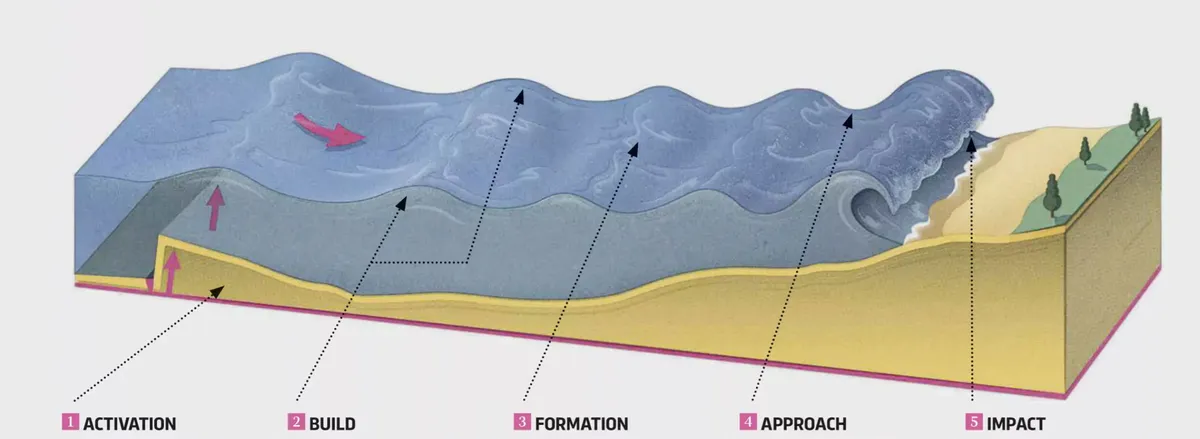
1
Activation
A tsunami begins far offshore, with an earthquake, volcanic eruption or landslide. The sudden movement on the seabed displaces the water above it. Although the vertical movement may initially be less than a metre, it covers a large area and the total volume of water displaced is huge.
2
Build
In deep water, the wave spreads out rapidly. The wave may only be 30cm high at this point and hard to spot, but it travels at more than 800km per hour. Unlike normal, wind-driven waves, which are spaced about 100m apart, there can be up to 200km between successive tsunami wave crests.
3
Formation
Each wave has a peak and a trough, and sometimes the trough of a tsunami reaches land before the peak. This causes a drawback where the tide seems to go out hundreds of metres further than usual. This drawback lasts for about six minutes before the peak reaches shore, and can catch people out.
4
Approach
As the wave crest reaches shallower water, friction with the seabed causes it to slow down. The faster water arriving behind it piles in and pushes the wave crest much higher. The wave height will continue to increase over the next six minutes.
5
Impact
Most tsunamis do not have a breaking wave crest, instead they resemble a fast incoming tide. This can push incredible volumes of water up to a kilometre inland, sweeping up people, trees, cars and small buildings in their path. In the next drawback, people and objects can get swept out to sea.
Read more:
- How do thunderstorms form?
- How do tree branches form?
- How does the ‘Vomit Comet’ work?
- Why are there two layers of clouds?
To submit your questions email us at questions@sciencefocus.com (don't forget to include your name and location)

